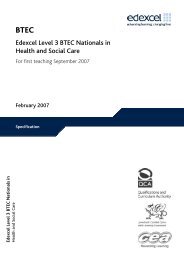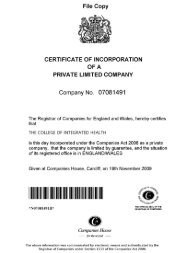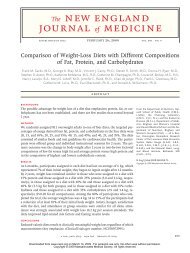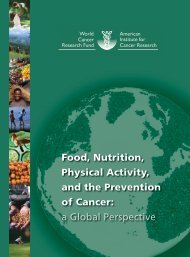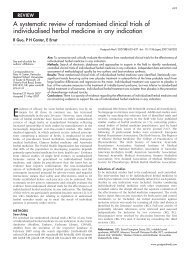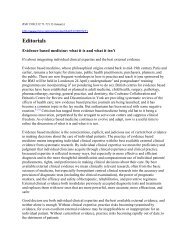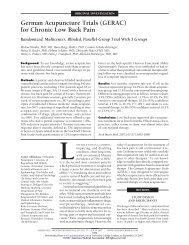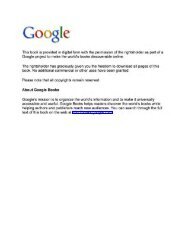Evidence Check 2: Homeopathy - Homeowatch
Evidence Check 2: Homeopathy - Homeowatch
Evidence Check 2: Homeopathy - Homeowatch
You also want an ePaper? Increase the reach of your titles
YUMPU automatically turns print PDFs into web optimized ePapers that Google loves.
<strong>Evidence</strong> <strong>Check</strong> 2: <strong>Homeopathy</strong> 15Like-cures-like principle50. The principle of like-cures-like was described by Dr Peter Fisher as analogous to theprinciple of toxicology hormesis. 52 Professor Edward Calabrese, a toxicology expert fromthe University of Massachusetts, has described hormesis as “a dose-response relationshipphenomenon characterized by low-dose stimulation and high-dose inhibition”. 53 In otherwords, the impact of toxins on physiology depends on dose: substances that are toxic inhigh doses may be beneficial in low doses. For example, “as the dose of a carcinogendecreases, it reaches a point where the agent actually may reduce the risk of cancer belowthat of the control group”. 54 And this has been likened to the like-cures-like principlecentral to homeopathy, 55 whereby a substance that causes a particular symptom will curethat symptom if administered at a low dose.51. There are two aspects of the argument that the like-cures-like principle is based onhormesis that concern us.a) Over-extrapolation: it is not good scientific practice to conclude that because somesubstances are harmful at high doses and beneficial at low doses, that all substancesbehave in the same way; andb) Provings using ultra-dilutions: the similarity with hormesis breaks down further ifprovings are carried out using ultra-dilutions. Hormesis is a dose-response: it providesno rationale for expecting an ultra-dilution to cause symptoms in “healthy” people andthe same ultra-dilution to cure those symptoms in “unwell” people.52. We have a further concern about the like-cures-like principle. It is not reasonable tolump “symptoms” into categories independent of physiological causation. For example,there are many different kinds of stimulants—caffeine, nicotine, amphetamines—but themetabolic pathways they use to cause stimulation differ. The principle of like-cures-likeoverlooks this complication, by holding that any kind of stimulant could, at low enoughdoses, counteract insomnia. But insomnia is caused by different things, such as pain,hormonal changes, psychological disorders or jet lag as well as the use of stimulants.Treating the symptoms and ignoring the causes is simply not good medical practice.53. Finally, there are examples of practice. We are concerned by some homeopathicproducts. For example, it is possible to buy homeopathic products made from body partssuch as hip joints and colons, animals such as iguana and dragonfly, and different kinds ofsunlight. We are doubly concerned that it is also possible to buy products derived fromprecious archaeological features such as the Great Wall of China and Stonehenge. 56 We donot understand what symptoms could be induced (and therefore be treated) by theseproducts under the like-cures-like principle.52 Ev 22, para 1053 Edward J Calabrese and Linda A Baldwin, “HORMESIS: The Dose-Response Revolution”, Annual Review ofPharmacology and Toxicology, April 2003, 43, 175–19754 Edward J Calabrese, “Hormesis: a revolution in toxicology, risk assessment and medicine”, European MolecularBiology Organization, Vol 5 (2004), pp S37–S4055 “What is homeopathy?”, The Society of Homeopaths, www.homeopathy-soh.org56 “Helios remedy list 21/1/2010”, Helios <strong>Homeopathy</strong> Ltd., www.helios.co.uk



